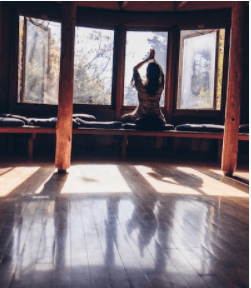
When we feel disconnected from ourselves, we can often feel a sense of restriction and limitation. According to Russell and Linda Delman, who are returning to Esalen this fall to teach The Embodied Life: Meditation, Guided Inquiry and the Teachings of Moshe Feldenkrais, we find freedom by simply being aware of our body, in the present moment. And as we become more grounded and aware, we begin to experience a sense of wholeness and ultimately the integration of mind, body and spirit.
Russell began his study in mind/body and the human potential 50 years ago as a psychology student. He first visited Esalen in 1971 and became one of the first people in the world authorized to lead Feldenkrais® professional training programs. With his wife Linda, also a Feldenkrais trainer, Russell created the Feldenkrais-India Project which included working with Mother Teresa's Missions in Calcutta.
Esalen News: Do you feel it is more challenging today than when you first started your practice to live an embodied life? In other words, are there more challenges that are disconnecting us from ourselves and ultimately a feeling of presence?
Russell: Without sounding too extreme, we are deeply concerned about the pervasive influence of “technology addiction” upon people’s capacity for Presence and for relationship. Seeing this in children, who do not have strong enough ego-forces to ward it off, is particularly distressing. We are not anti-technology; we are grateful for the great benefits that can come from using these capacities consciously. As an old Zen master said about drinking sake: “You must know if you are drinking sake or if sake is drinking you.” People all over the world seem more engaged in virtual reality than in the here and now. The potential negative impact of this for humanity can really not be overstated.
Linda: Technology gives us a larger view of the world and with this we have the opportunity to realize the oneness of humanity, its joys and its sorrows. This can be informative, which leads to a new understanding of the world. It can also be overwhelming and stressful for us, as we realize that we, too, are part of the suffering and the challenges.
John O’Donahue, an Irish poet, states this truth so authentically, “There are days in your life when unwelcome news will breach your boundaries, whether through the measured sentences of an obligated physician or through the cold earpiece of technology, news of suffering, and unimaginable trials will arrive.”
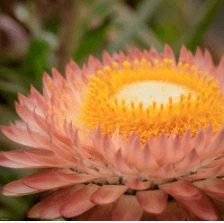
In our lives, we have our own joys and sorrows and, now, with our new global view, we are challenged to digest the world’s joys and sorrows as well. How do we greet these experiences in a life-giving way? In the Embodied Life School, we practice ways of listening to how the challenges we encounter daily live in our thoughts and feelings, and are carried in our bodies.
When traversing the path of sorrow through a listening process, healing can arise, giving way to a greater affinity toward health and maybe even something like joy! The more we awaken our capacities to be present with anyone or anything, a kind of gratitude also may arrive which I believe brings a new reverence for life.
Esalen News: When did you first make the connection that embodiment led to a greater sense of presence and awareness?
Russell: Both Linda and I were blessed with an early attraction to movement, first through athletics and then through intuiting a connection to the larger possibilities of embodiment. For me, the realization came first through Zen meditation, which is surprisingly “body-based.” I was experiencing a broken heart at 19 years old and was somehow open to meditating after reading just one article about Zen.
I saw quickly that I spent 90+% of my life lost in mental chatter about the past and future and was rarely present. This realization was devastating AND very inspiring! I saw that IF I could be in my body, I could be present in life, because my body was always alive in the present moment. This is still the main insight that motivates these teachings nearly 50 years later. Not coincidentally, coming to Esalen for one month that same year, 1971, grounded this realization by working with Gestalt, movement, massage and meditation, with some of the early teachers of these practices.
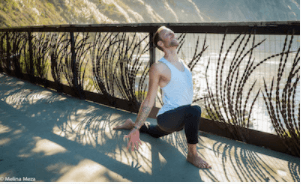
Linda: As Russell stated, I was an athlete and participated in sports, dance and yoga in my youth. Studying with Moshe Feldenkrais was entirely different as he approached movement THROUGH awareness. I had begun meditating in 1970 but it was really through Feldenkrais that the two forms became one.
Esalen News: Could you share more about your interaction with Moshe Feldenkrais?
Russell: When I first came to Esalen, I heard Dr. Feldenkrais spoken of as the “leading edge in somatic consciousness”. Then in 1975, while teaching yoga in San Francisco, I came upon a flyer that advertised his first North American Professional Training. This three-year program was organized through the Humanistic Psychology Institute.
A small group of us were also given the opportunity to do a Ph.D. under Dr. Feldenkrais. Funnily, after the first summer of training, both Moshe and I decided that the requirements of the program were interfering with the “real learning” so we both dropped out of the doctoral aspect of the training.
Linda did not do her formal training with Dr. Feldenkrais until 1980 in his second U.S. program, but she freely attended the first program as a visitor. We both visited Moshe in Israel many times and, toward the end of his life, developed a close personal relationship with him.
Esalen News: For our readers who may not be as familiar with the Feldenkrais Method, could you share highlights of some of his teachings that are included in your upcoming workshop?
Russell and Linda: We will do simple, profound, enjoyable movements that have surprising effects on our bodies, minds and spirits. That sounds like hyperbole but it is actually true.
Although movement was the medium Moshe chose for his teaching, his main interest was in human freedom NOT the physical body. Unfortunately, the movements are so brilliant and effective for helping the physical body that many people consider Feldenkrais movements a high level of physical therapy or gymnastic.
Feldenkrais realized that our mental and emotional patterns are held within the infrastructure of our motor patterns. Our habits of breathing, sitting, standing and moving are not simply physical; they are expressive of our inner life. Any theatre director or sculptor knows that the disposition of the body is an expression of the whole person. Feldenkrais used this insight to develop more than 1,000 movement lessons to help deconstruct the inefficient, compulsive habits that create both physical limitation AND limitations on the potential of the human being.
For me, the key is that becoming aware of the body is a doorway to Presence and this is essential for human freedom. Without this awareness, we MUST repeat the past; the brain will do what it already knows. Feeling better physically is what Feldenkrais called “the icing on the cake of awareness”.
Esalen News: Would you walk us through a meditation practice that our readers could use at home to feel more centered and grounded in our bodies?
Russell and Linda: A core practice of “The Embodied Life” teachings is so simple that people cannot believe its potency unless they try it. We call it “Ground, Sound, Breath”.
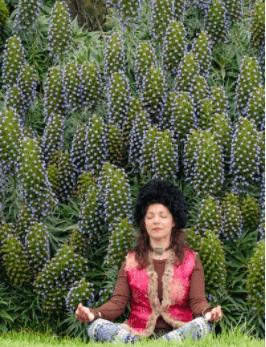
It begins with a PAUSE, eyes closed at the beginning, and sensing the ground under your feet if standing and under your bottom and feet if sitting. Then, without losing the sense of the ground, open attention to the external space by sensing sounds and the environment without looking around.
This is followed by sensing three breaths from beginning to end, as you continue to sense the ground and external space. That is it! Too simple? Try it. Staying present for three complete breaths can change the rest of your day.
We do this without great effort, without fighting the thoughts that come and go. Thoughts are not the enemy of meditation. This whole process takes about 30-60 seconds. We recommend doing this five-10 times a day. Can you spare five minutes a day to become truly more Present? Putting Post-Its in various places or setting the timer on your phone as reminders can be helpful. Simply stepping off the train of “doing the next thing”, of the momentum of everyday life, and creating small “pattern interruptions” is incredibly powerful.
Esalen News: What is the most rewarding aspect of your work?
Russell: That is easy — the joy of being with people who want to become more Present in themselves and in their relationships. Hearing from people all around the world, how their lives have been enriched and transformed through the work brings great meaning and satisfaction.
Linda: I agree completely. It is such a unique experience to be able to pass along the seeds that have ripened in our lives and plant these seeds in the lives of others. For me it brings a sense that the work of awakening can continue to grow for generations to come, and this is deeply satisfying.
Esalen News: What do you find most rewarding about teaching at Esalen?
Russell: Anyone drawn to Esalen has a longing to realize their true potential, whether it is conscious or not. To be around the energy of human potentiality as it manifests in and is supported by the natural beauty of Esalen is incredibly inspiring. Also, hearing the ocean while lying in a tub or looking at the mist settled over the mountainside are images that are never absent from my inner life.
Linda: The environment of beauty, quietude and ease is perfect for deep learning!
Join Russell and Linda Delman at Esalen September 20-22, 2019, for The Embodied Life: Meditation, Guided Inquiry and the Teachings of Moshe Feldenkrais.
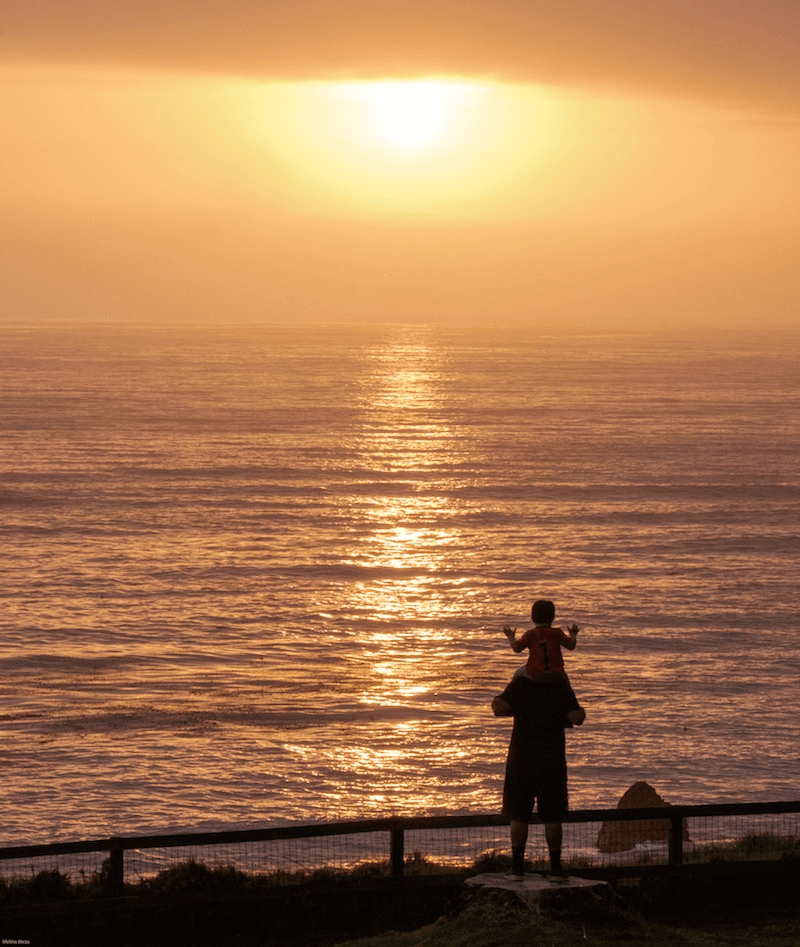
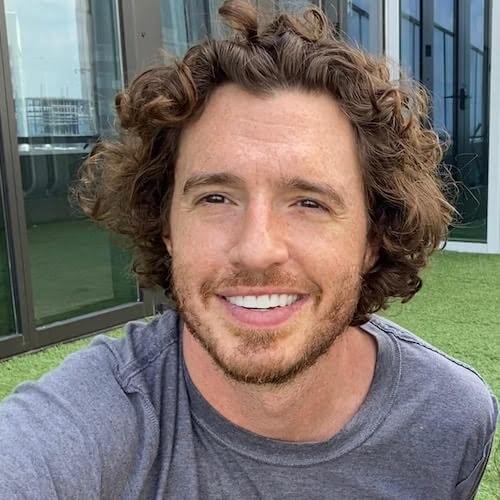
“Remembering to be as self compassionate as I can and praying to the divine that we're all a part of.”
–Aaron
“Prayer, reading, meditation, walking.”
–Karen
“Erratically — which is an ongoing stream of practice to find peace.”
–Charles
“Try on a daily basis to be kind to myself and to realize that making mistakes is a part of the human condition. Learning from our mistakes is a journey. But it starts with compassion and caring. First for oneself.”
–Steve
“Physically: aerobic exercise, volleyball, ice hockey, cycling, sailing. Emotionally: unfortunately I have to work to ‘not care’ about people or situations which may end painfully. Along the lines of ‘attachment is the source of suffering’, so best to avoid it or limit its scope. Sad though because it could also be the source of great joy. Is it worth the risk?“
–Rainer
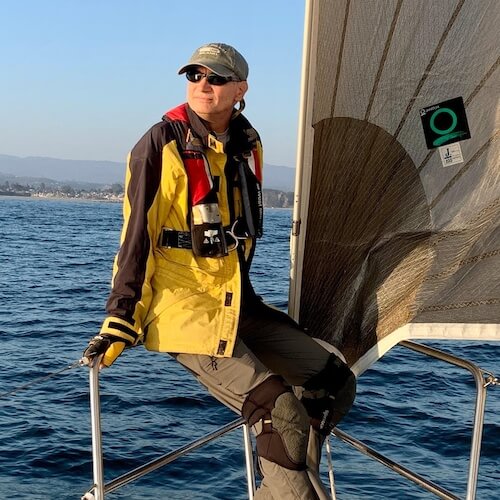

“It's time for my heart to be nurtured on one level yet contained on another. To go easy on me and to allow my feelings to be validated, not judged harshly. On the other hand, to let the heart rule with equanimity and not lead the mind and body around like a master.”
–Suzanne
“I spend time thinking of everything I am grateful for, and I try to develop my ability to express compassion for myself and others without reservation. I take time to do the things I need to do to keep myself healthy and happy. This includes taking experiential workshops, fostering relationships, and participating within groups which have a similar interest to become a more compassionate and fulfilled being.“
–Peter
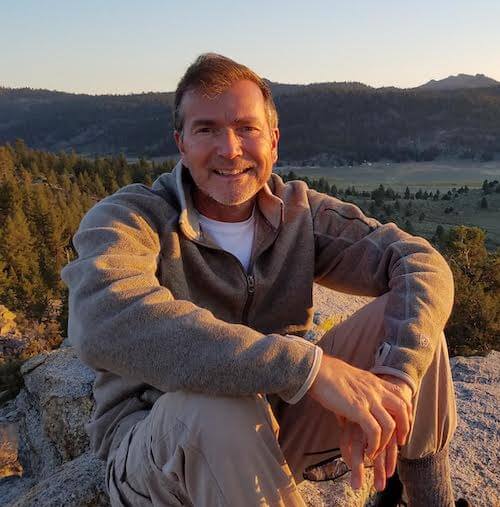
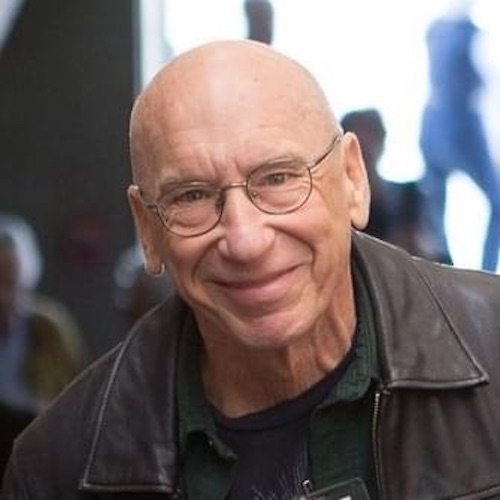
“Self-forgiveness for my own judgments. And oh yeah, coming to Esalen.”
–David B.
“Hmm, this is a tough one! I guess I take care of my heart through fostering relationships with people I feel connected to. Spending quality time with them (whether we're on the phone, through messages/letters, on Zoom, or in-person). Being there for them, listening to them, sharing what's going on with me, my struggles and my successes... like we do in the Esalen weekly Friends of Esalen Zoom sessions!”
–Lori

“I remind myself in many ways of the fact that " Love is all there is!" LOVE is the prize and this one precious life is the stage we get to learn our lessons. I get out into nature, hike, camp, river kayak, fly fish, garden, I create, I dance (not enough!), and I remain grateful for each day, each breath, each moment. Being in the moment, awake, and remembering the gift of life and my feeling of gratitude for all of creation.”
–Steven
“My physical heart by limiting stress and eating a heart-healthy diet. My emotional heart by staying in love with the world and by knowing that all disappointment and loss will pass.“
–David Z.
Today, September 29, is World Heart Day. Strike up a conversation with your own heart and as you feel comfortable, encourage others to do the same. As part of our own transformations and self-care, we sometimes ask for others to illuminate and enliven our hearts or speak our love language.
What if we could do this for ourselves too, even if just for today… or to start a heart practice, forever?

When we feel disconnected from ourselves, we can often feel a sense of restriction and limitation. According to Russell and Linda Delman, who are returning to Esalen this fall to teach The Embodied Life: Meditation, Guided Inquiry and the Teachings of Moshe Feldenkrais, we find freedom by simply being aware of our body, in the present moment. And as we become more grounded and aware, we begin to experience a sense of wholeness and ultimately the integration of mind, body and spirit.
Russell began his study in mind/body and the human potential 50 years ago as a psychology student. He first visited Esalen in 1971 and became one of the first people in the world authorized to lead Feldenkrais® professional training programs. With his wife Linda, also a Feldenkrais trainer, Russell created the Feldenkrais-India Project which included working with Mother Teresa's Missions in Calcutta.
Esalen News: Do you feel it is more challenging today than when you first started your practice to live an embodied life? In other words, are there more challenges that are disconnecting us from ourselves and ultimately a feeling of presence?
Russell: Without sounding too extreme, we are deeply concerned about the pervasive influence of “technology addiction” upon people’s capacity for Presence and for relationship. Seeing this in children, who do not have strong enough ego-forces to ward it off, is particularly distressing. We are not anti-technology; we are grateful for the great benefits that can come from using these capacities consciously. As an old Zen master said about drinking sake: “You must know if you are drinking sake or if sake is drinking you.” People all over the world seem more engaged in virtual reality than in the here and now. The potential negative impact of this for humanity can really not be overstated.
Linda: Technology gives us a larger view of the world and with this we have the opportunity to realize the oneness of humanity, its joys and its sorrows. This can be informative, which leads to a new understanding of the world. It can also be overwhelming and stressful for us, as we realize that we, too, are part of the suffering and the challenges.
John O’Donahue, an Irish poet, states this truth so authentically, “There are days in your life when unwelcome news will breach your boundaries, whether through the measured sentences of an obligated physician or through the cold earpiece of technology, news of suffering, and unimaginable trials will arrive.”

In our lives, we have our own joys and sorrows and, now, with our new global view, we are challenged to digest the world’s joys and sorrows as well. How do we greet these experiences in a life-giving way? In the Embodied Life School, we practice ways of listening to how the challenges we encounter daily live in our thoughts and feelings, and are carried in our bodies.
When traversing the path of sorrow through a listening process, healing can arise, giving way to a greater affinity toward health and maybe even something like joy! The more we awaken our capacities to be present with anyone or anything, a kind of gratitude also may arrive which I believe brings a new reverence for life.
Esalen News: When did you first make the connection that embodiment led to a greater sense of presence and awareness?
Russell: Both Linda and I were blessed with an early attraction to movement, first through athletics and then through intuiting a connection to the larger possibilities of embodiment. For me, the realization came first through Zen meditation, which is surprisingly “body-based.” I was experiencing a broken heart at 19 years old and was somehow open to meditating after reading just one article about Zen.
I saw quickly that I spent 90+% of my life lost in mental chatter about the past and future and was rarely present. This realization was devastating AND very inspiring! I saw that IF I could be in my body, I could be present in life, because my body was always alive in the present moment. This is still the main insight that motivates these teachings nearly 50 years later. Not coincidentally, coming to Esalen for one month that same year, 1971, grounded this realization by working with Gestalt, movement, massage and meditation, with some of the early teachers of these practices.

Linda: As Russell stated, I was an athlete and participated in sports, dance and yoga in my youth. Studying with Moshe Feldenkrais was entirely different as he approached movement THROUGH awareness. I had begun meditating in 1970 but it was really through Feldenkrais that the two forms became one.
Esalen News: Could you share more about your interaction with Moshe Feldenkrais?
Russell: When I first came to Esalen, I heard Dr. Feldenkrais spoken of as the “leading edge in somatic consciousness”. Then in 1975, while teaching yoga in San Francisco, I came upon a flyer that advertised his first North American Professional Training. This three-year program was organized through the Humanistic Psychology Institute.
A small group of us were also given the opportunity to do a Ph.D. under Dr. Feldenkrais. Funnily, after the first summer of training, both Moshe and I decided that the requirements of the program were interfering with the “real learning” so we both dropped out of the doctoral aspect of the training.
Linda did not do her formal training with Dr. Feldenkrais until 1980 in his second U.S. program, but she freely attended the first program as a visitor. We both visited Moshe in Israel many times and, toward the end of his life, developed a close personal relationship with him.
Esalen News: For our readers who may not be as familiar with the Feldenkrais Method, could you share highlights of some of his teachings that are included in your upcoming workshop?
Russell and Linda: We will do simple, profound, enjoyable movements that have surprising effects on our bodies, minds and spirits. That sounds like hyperbole but it is actually true.
Although movement was the medium Moshe chose for his teaching, his main interest was in human freedom NOT the physical body. Unfortunately, the movements are so brilliant and effective for helping the physical body that many people consider Feldenkrais movements a high level of physical therapy or gymnastic.
Feldenkrais realized that our mental and emotional patterns are held within the infrastructure of our motor patterns. Our habits of breathing, sitting, standing and moving are not simply physical; they are expressive of our inner life. Any theatre director or sculptor knows that the disposition of the body is an expression of the whole person. Feldenkrais used this insight to develop more than 1,000 movement lessons to help deconstruct the inefficient, compulsive habits that create both physical limitation AND limitations on the potential of the human being.
For me, the key is that becoming aware of the body is a doorway to Presence and this is essential for human freedom. Without this awareness, we MUST repeat the past; the brain will do what it already knows. Feeling better physically is what Feldenkrais called “the icing on the cake of awareness”.
Esalen News: Would you walk us through a meditation practice that our readers could use at home to feel more centered and grounded in our bodies?
Russell and Linda: A core practice of “The Embodied Life” teachings is so simple that people cannot believe its potency unless they try it. We call it “Ground, Sound, Breath”.

It begins with a PAUSE, eyes closed at the beginning, and sensing the ground under your feet if standing and under your bottom and feet if sitting. Then, without losing the sense of the ground, open attention to the external space by sensing sounds and the environment without looking around.
This is followed by sensing three breaths from beginning to end, as you continue to sense the ground and external space. That is it! Too simple? Try it. Staying present for three complete breaths can change the rest of your day.
We do this without great effort, without fighting the thoughts that come and go. Thoughts are not the enemy of meditation. This whole process takes about 30-60 seconds. We recommend doing this five-10 times a day. Can you spare five minutes a day to become truly more Present? Putting Post-Its in various places or setting the timer on your phone as reminders can be helpful. Simply stepping off the train of “doing the next thing”, of the momentum of everyday life, and creating small “pattern interruptions” is incredibly powerful.
Esalen News: What is the most rewarding aspect of your work?
Russell: That is easy — the joy of being with people who want to become more Present in themselves and in their relationships. Hearing from people all around the world, how their lives have been enriched and transformed through the work brings great meaning and satisfaction.
Linda: I agree completely. It is such a unique experience to be able to pass along the seeds that have ripened in our lives and plant these seeds in the lives of others. For me it brings a sense that the work of awakening can continue to grow for generations to come, and this is deeply satisfying.
Esalen News: What do you find most rewarding about teaching at Esalen?
Russell: Anyone drawn to Esalen has a longing to realize their true potential, whether it is conscious or not. To be around the energy of human potentiality as it manifests in and is supported by the natural beauty of Esalen is incredibly inspiring. Also, hearing the ocean while lying in a tub or looking at the mist settled over the mountainside are images that are never absent from my inner life.
Linda: The environment of beauty, quietude and ease is perfect for deep learning!
Join Russell and Linda Delman at Esalen September 20-22, 2019, for The Embodied Life: Meditation, Guided Inquiry and the Teachings of Moshe Feldenkrais.


“Remembering to be as self compassionate as I can and praying to the divine that we're all a part of.”
–Aaron
“Prayer, reading, meditation, walking.”
–Karen
“Erratically — which is an ongoing stream of practice to find peace.”
–Charles
“Try on a daily basis to be kind to myself and to realize that making mistakes is a part of the human condition. Learning from our mistakes is a journey. But it starts with compassion and caring. First for oneself.”
–Steve
“Physically: aerobic exercise, volleyball, ice hockey, cycling, sailing. Emotionally: unfortunately I have to work to ‘not care’ about people or situations which may end painfully. Along the lines of ‘attachment is the source of suffering’, so best to avoid it or limit its scope. Sad though because it could also be the source of great joy. Is it worth the risk?“
–Rainer


“It's time for my heart to be nurtured on one level yet contained on another. To go easy on me and to allow my feelings to be validated, not judged harshly. On the other hand, to let the heart rule with equanimity and not lead the mind and body around like a master.”
–Suzanne
“I spend time thinking of everything I am grateful for, and I try to develop my ability to express compassion for myself and others without reservation. I take time to do the things I need to do to keep myself healthy and happy. This includes taking experiential workshops, fostering relationships, and participating within groups which have a similar interest to become a more compassionate and fulfilled being.“
–Peter


“Self-forgiveness for my own judgments. And oh yeah, coming to Esalen.”
–David B.
“Hmm, this is a tough one! I guess I take care of my heart through fostering relationships with people I feel connected to. Spending quality time with them (whether we're on the phone, through messages/letters, on Zoom, or in-person). Being there for them, listening to them, sharing what's going on with me, my struggles and my successes... like we do in the Esalen weekly Friends of Esalen Zoom sessions!”
–Lori

“I remind myself in many ways of the fact that " Love is all there is!" LOVE is the prize and this one precious life is the stage we get to learn our lessons. I get out into nature, hike, camp, river kayak, fly fish, garden, I create, I dance (not enough!), and I remain grateful for each day, each breath, each moment. Being in the moment, awake, and remembering the gift of life and my feeling of gratitude for all of creation.”
–Steven
“My physical heart by limiting stress and eating a heart-healthy diet. My emotional heart by staying in love with the world and by knowing that all disappointment and loss will pass.“
–David Z.
Today, September 29, is World Heart Day. Strike up a conversation with your own heart and as you feel comfortable, encourage others to do the same. As part of our own transformations and self-care, we sometimes ask for others to illuminate and enliven our hearts or speak our love language.
What if we could do this for ourselves too, even if just for today… or to start a heart practice, forever?

When we feel disconnected from ourselves, we can often feel a sense of restriction and limitation. According to Russell and Linda Delman, who are returning to Esalen this fall to teach The Embodied Life: Meditation, Guided Inquiry and the Teachings of Moshe Feldenkrais, we find freedom by simply being aware of our body, in the present moment. And as we become more grounded and aware, we begin to experience a sense of wholeness and ultimately the integration of mind, body and spirit.
Russell began his study in mind/body and the human potential 50 years ago as a psychology student. He first visited Esalen in 1971 and became one of the first people in the world authorized to lead Feldenkrais® professional training programs. With his wife Linda, also a Feldenkrais trainer, Russell created the Feldenkrais-India Project which included working with Mother Teresa's Missions in Calcutta.
Esalen News: Do you feel it is more challenging today than when you first started your practice to live an embodied life? In other words, are there more challenges that are disconnecting us from ourselves and ultimately a feeling of presence?
Russell: Without sounding too extreme, we are deeply concerned about the pervasive influence of “technology addiction” upon people’s capacity for Presence and for relationship. Seeing this in children, who do not have strong enough ego-forces to ward it off, is particularly distressing. We are not anti-technology; we are grateful for the great benefits that can come from using these capacities consciously. As an old Zen master said about drinking sake: “You must know if you are drinking sake or if sake is drinking you.” People all over the world seem more engaged in virtual reality than in the here and now. The potential negative impact of this for humanity can really not be overstated.
Linda: Technology gives us a larger view of the world and with this we have the opportunity to realize the oneness of humanity, its joys and its sorrows. This can be informative, which leads to a new understanding of the world. It can also be overwhelming and stressful for us, as we realize that we, too, are part of the suffering and the challenges.
John O’Donahue, an Irish poet, states this truth so authentically, “There are days in your life when unwelcome news will breach your boundaries, whether through the measured sentences of an obligated physician or through the cold earpiece of technology, news of suffering, and unimaginable trials will arrive.”

In our lives, we have our own joys and sorrows and, now, with our new global view, we are challenged to digest the world’s joys and sorrows as well. How do we greet these experiences in a life-giving way? In the Embodied Life School, we practice ways of listening to how the challenges we encounter daily live in our thoughts and feelings, and are carried in our bodies.
When traversing the path of sorrow through a listening process, healing can arise, giving way to a greater affinity toward health and maybe even something like joy! The more we awaken our capacities to be present with anyone or anything, a kind of gratitude also may arrive which I believe brings a new reverence for life.
Esalen News: When did you first make the connection that embodiment led to a greater sense of presence and awareness?
Russell: Both Linda and I were blessed with an early attraction to movement, first through athletics and then through intuiting a connection to the larger possibilities of embodiment. For me, the realization came first through Zen meditation, which is surprisingly “body-based.” I was experiencing a broken heart at 19 years old and was somehow open to meditating after reading just one article about Zen.
I saw quickly that I spent 90+% of my life lost in mental chatter about the past and future and was rarely present. This realization was devastating AND very inspiring! I saw that IF I could be in my body, I could be present in life, because my body was always alive in the present moment. This is still the main insight that motivates these teachings nearly 50 years later. Not coincidentally, coming to Esalen for one month that same year, 1971, grounded this realization by working with Gestalt, movement, massage and meditation, with some of the early teachers of these practices.

Linda: As Russell stated, I was an athlete and participated in sports, dance and yoga in my youth. Studying with Moshe Feldenkrais was entirely different as he approached movement THROUGH awareness. I had begun meditating in 1970 but it was really through Feldenkrais that the two forms became one.
Esalen News: Could you share more about your interaction with Moshe Feldenkrais?
Russell: When I first came to Esalen, I heard Dr. Feldenkrais spoken of as the “leading edge in somatic consciousness”. Then in 1975, while teaching yoga in San Francisco, I came upon a flyer that advertised his first North American Professional Training. This three-year program was organized through the Humanistic Psychology Institute.
A small group of us were also given the opportunity to do a Ph.D. under Dr. Feldenkrais. Funnily, after the first summer of training, both Moshe and I decided that the requirements of the program were interfering with the “real learning” so we both dropped out of the doctoral aspect of the training.
Linda did not do her formal training with Dr. Feldenkrais until 1980 in his second U.S. program, but she freely attended the first program as a visitor. We both visited Moshe in Israel many times and, toward the end of his life, developed a close personal relationship with him.
Esalen News: For our readers who may not be as familiar with the Feldenkrais Method, could you share highlights of some of his teachings that are included in your upcoming workshop?
Russell and Linda: We will do simple, profound, enjoyable movements that have surprising effects on our bodies, minds and spirits. That sounds like hyperbole but it is actually true.
Although movement was the medium Moshe chose for his teaching, his main interest was in human freedom NOT the physical body. Unfortunately, the movements are so brilliant and effective for helping the physical body that many people consider Feldenkrais movements a high level of physical therapy or gymnastic.
Feldenkrais realized that our mental and emotional patterns are held within the infrastructure of our motor patterns. Our habits of breathing, sitting, standing and moving are not simply physical; they are expressive of our inner life. Any theatre director or sculptor knows that the disposition of the body is an expression of the whole person. Feldenkrais used this insight to develop more than 1,000 movement lessons to help deconstruct the inefficient, compulsive habits that create both physical limitation AND limitations on the potential of the human being.
For me, the key is that becoming aware of the body is a doorway to Presence and this is essential for human freedom. Without this awareness, we MUST repeat the past; the brain will do what it already knows. Feeling better physically is what Feldenkrais called “the icing on the cake of awareness”.
Esalen News: Would you walk us through a meditation practice that our readers could use at home to feel more centered and grounded in our bodies?
Russell and Linda: A core practice of “The Embodied Life” teachings is so simple that people cannot believe its potency unless they try it. We call it “Ground, Sound, Breath”.

It begins with a PAUSE, eyes closed at the beginning, and sensing the ground under your feet if standing and under your bottom and feet if sitting. Then, without losing the sense of the ground, open attention to the external space by sensing sounds and the environment without looking around.
This is followed by sensing three breaths from beginning to end, as you continue to sense the ground and external space. That is it! Too simple? Try it. Staying present for three complete breaths can change the rest of your day.
We do this without great effort, without fighting the thoughts that come and go. Thoughts are not the enemy of meditation. This whole process takes about 30-60 seconds. We recommend doing this five-10 times a day. Can you spare five minutes a day to become truly more Present? Putting Post-Its in various places or setting the timer on your phone as reminders can be helpful. Simply stepping off the train of “doing the next thing”, of the momentum of everyday life, and creating small “pattern interruptions” is incredibly powerful.
Esalen News: What is the most rewarding aspect of your work?
Russell: That is easy — the joy of being with people who want to become more Present in themselves and in their relationships. Hearing from people all around the world, how their lives have been enriched and transformed through the work brings great meaning and satisfaction.
Linda: I agree completely. It is such a unique experience to be able to pass along the seeds that have ripened in our lives and plant these seeds in the lives of others. For me it brings a sense that the work of awakening can continue to grow for generations to come, and this is deeply satisfying.
Esalen News: What do you find most rewarding about teaching at Esalen?
Russell: Anyone drawn to Esalen has a longing to realize their true potential, whether it is conscious or not. To be around the energy of human potentiality as it manifests in and is supported by the natural beauty of Esalen is incredibly inspiring. Also, hearing the ocean while lying in a tub or looking at the mist settled over the mountainside are images that are never absent from my inner life.
Linda: The environment of beauty, quietude and ease is perfect for deep learning!
Join Russell and Linda Delman at Esalen September 20-22, 2019, for The Embodied Life: Meditation, Guided Inquiry and the Teachings of Moshe Feldenkrais.


“Remembering to be as self compassionate as I can and praying to the divine that we're all a part of.”
–Aaron
“Prayer, reading, meditation, walking.”
–Karen
“Erratically — which is an ongoing stream of practice to find peace.”
–Charles
“Try on a daily basis to be kind to myself and to realize that making mistakes is a part of the human condition. Learning from our mistakes is a journey. But it starts with compassion and caring. First for oneself.”
–Steve
“Physically: aerobic exercise, volleyball, ice hockey, cycling, sailing. Emotionally: unfortunately I have to work to ‘not care’ about people or situations which may end painfully. Along the lines of ‘attachment is the source of suffering’, so best to avoid it or limit its scope. Sad though because it could also be the source of great joy. Is it worth the risk?“
–Rainer


“It's time for my heart to be nurtured on one level yet contained on another. To go easy on me and to allow my feelings to be validated, not judged harshly. On the other hand, to let the heart rule with equanimity and not lead the mind and body around like a master.”
–Suzanne
“I spend time thinking of everything I am grateful for, and I try to develop my ability to express compassion for myself and others without reservation. I take time to do the things I need to do to keep myself healthy and happy. This includes taking experiential workshops, fostering relationships, and participating within groups which have a similar interest to become a more compassionate and fulfilled being.“
–Peter


“Self-forgiveness for my own judgments. And oh yeah, coming to Esalen.”
–David B.
“Hmm, this is a tough one! I guess I take care of my heart through fostering relationships with people I feel connected to. Spending quality time with them (whether we're on the phone, through messages/letters, on Zoom, or in-person). Being there for them, listening to them, sharing what's going on with me, my struggles and my successes... like we do in the Esalen weekly Friends of Esalen Zoom sessions!”
–Lori

“I remind myself in many ways of the fact that " Love is all there is!" LOVE is the prize and this one precious life is the stage we get to learn our lessons. I get out into nature, hike, camp, river kayak, fly fish, garden, I create, I dance (not enough!), and I remain grateful for each day, each breath, each moment. Being in the moment, awake, and remembering the gift of life and my feeling of gratitude for all of creation.”
–Steven
“My physical heart by limiting stress and eating a heart-healthy diet. My emotional heart by staying in love with the world and by knowing that all disappointment and loss will pass.“
–David Z.
Today, September 29, is World Heart Day. Strike up a conversation with your own heart and as you feel comfortable, encourage others to do the same. As part of our own transformations and self-care, we sometimes ask for others to illuminate and enliven our hearts or speak our love language.
What if we could do this for ourselves too, even if just for today… or to start a heart practice, forever?